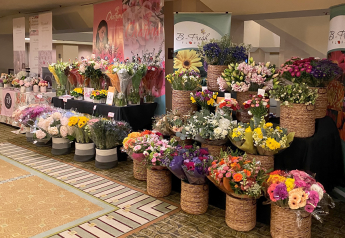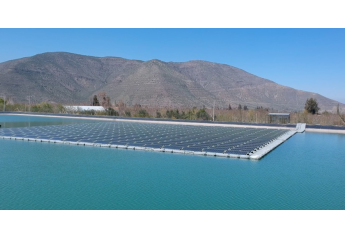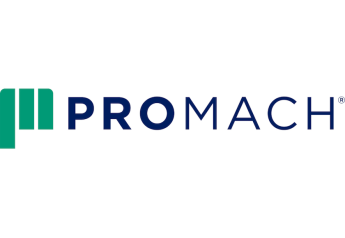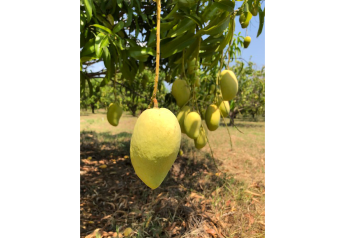Pear crop survives heat test
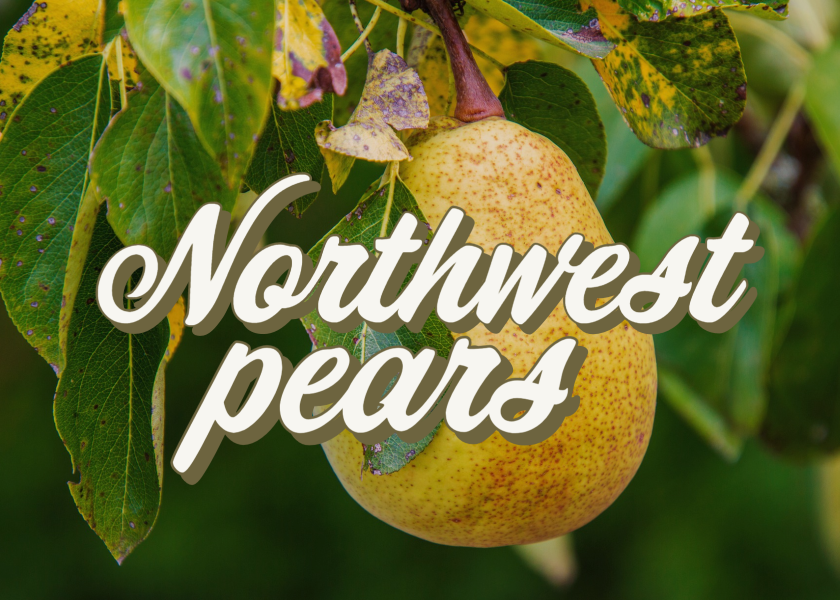
Grower-shippers of pears have dealt with multiple heat waves this season, and that is just another challenge that is testing their resiliency.
“With the pandemic, farmers adjusted to so many things – shipping and logistics issues, erratic demand as consumers pantry-loaded, as well as altering packaging formats to accommodate the different ways consumers were eating – all on top of a frost event that limited the 2020 crop,” said Matt Dusi, sector manager and food and agribusiness industry advisors for Wells Fargo Commercial Banking. Now, stretches of hot weather have stressed apple and pear crops.
Multiple days over 100 degrees and several days over 109 degrees punctuated what have been hotter than normal temperatures that began in June.
“The extent of sunburn, uneven ripening, and sizing issues are tough to quantify at this point of the season, but what I can say is that when a season starts out, growers and farmers are at 100% on projections, and with multiple heat waves, we will see revisions down from that number, not up,” Dusi said.
Crop outlook
Despite the heat, grower-shippers said that the outlook for the pear crop was good.
“The pears that we’re harvesting right now are fantastic,” said Mac Riggan director of marketing for Chelan, Wash.-based Chelan Fresh.
The effect from the heat was less significant than expected so far, some said.
“Now that we’ve begun, we are pleasantly surprised to see less effect on size than anticipated,” said Dan Davis, director of business development for Starr Ranch Growers, Wenatchee, Wash. “With our production being primarily Hood River-based, we haven’t had quite the degree of heat as there has been in other pear growing regions in the Northwest.”
Davis said Starr Ranch Growers expects larger pear volume than 2020.
“What kind of harvest we have will be heavily dependent on the weather we get over the next two months,” Davis said. “There is fear that if we get continued heat that the harvest will compress, and labor issues will be beyond what can be managed. Should that happen growers will have to make some difficult decisions as to what gets picked, and we may also experience some maturity issues.”
The five-year average for the Northwest fresh pear crop is 16.8 million standard box equivalents, said Kevin Moffitt, president and CEO of Pear Bureau Northwest. In mid-August, the industry consensus was that the crop is expected to come in close to that, he said.
Bartletts actually respond quite well to warm weather, said Chuck Sinks, president of sales and marketing for Sage Fruit Co., Yakima, Wash.
“Timing on harvest may be a day or two off, but is closer to a more normal season,” Sinks said. “This season, we will see some smaller-sized pears on the front end, but they should size up nicely for the overall crop.”
Industry-wide, Sinks said he thinks Northwest pear marketers may see a slight increase in volume compared with last year.
Harvest timing has not been greatly impacted by the heat, and initial reports on quality are good for pears, said Brianna Shales, marketing director for Stemilt Growers, Wenatchee. “We are expecting size to trend down from last year because of heat impacts — however, not so substantially that it would be a big shift,” she said.
Overall, Shales said Stemilt expects similar volumes of pears compared with last year, with some changes by variety.
“Bosc is up slightly because it will be an ‘on’ year for bosc. Bartlett is up while d’anjous are flat and could trend down from last year’s supply,” Shales said, noting that red pears will also be down slightly over last year.
Cheryl Stewart, with Columbia Gorge Organic Fruit, Hood River, Ore., said the firm’s organic pear offerings are expected similar to last year.
“Our crop is shaping up to be very similar to last year in size and volume,” said Cat Gipe-Stewart, communication manager for Superfresh Growers, Yakima, Wash.
She noted the bin estimates for Superfresh Growers were nearly identical to last year.
“Sizing may be about one size down from last year due to the Northwest heat this summer, but the changes are very minute,” she said.
Superfresh Growers started picking and packing pears at the beginning of August, with both organic and conventional bartletts, and organic and conventional starkrimson. That will be followed by September harvest of organic anjou, organic and conventional bosc, organic concorde, and organic red bartlett. Harvest will continue in October and November with red and green anjou pears, she said.
Smaller fruit should see greater availability this year, said David Armenta, director of export for Selah, Wash.-based Rainier Fruit Co.
“Last year we saw more limitations on small fruit; this year will be a better mix,” Armenta said.
Overall crop volume is slightly up from last season, he said.
Steve Flashing, marketing executive with the Honeybear Marketing, Brewster, Wash., said that pear sizing is down, with peak sizes expected in the 100-count range. The overall crop may be down somewhat from 2020, he said.


